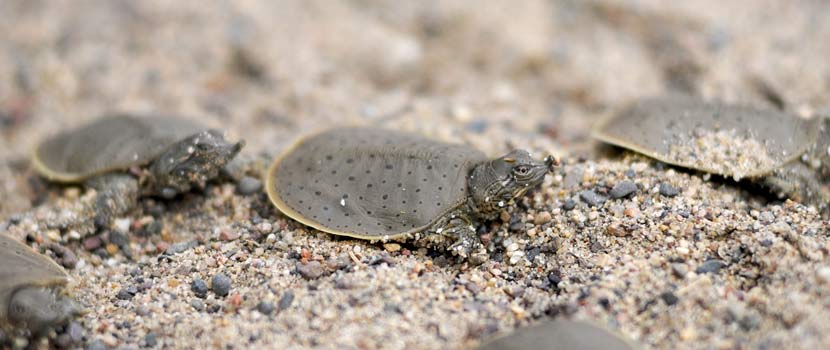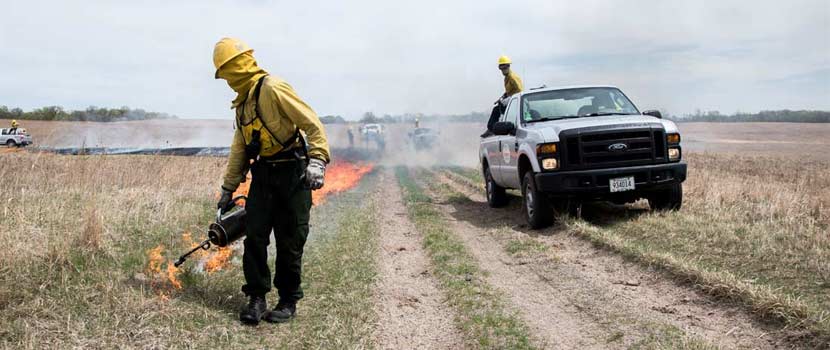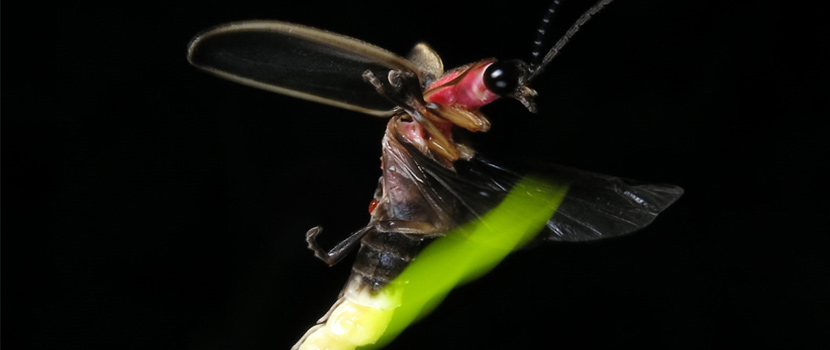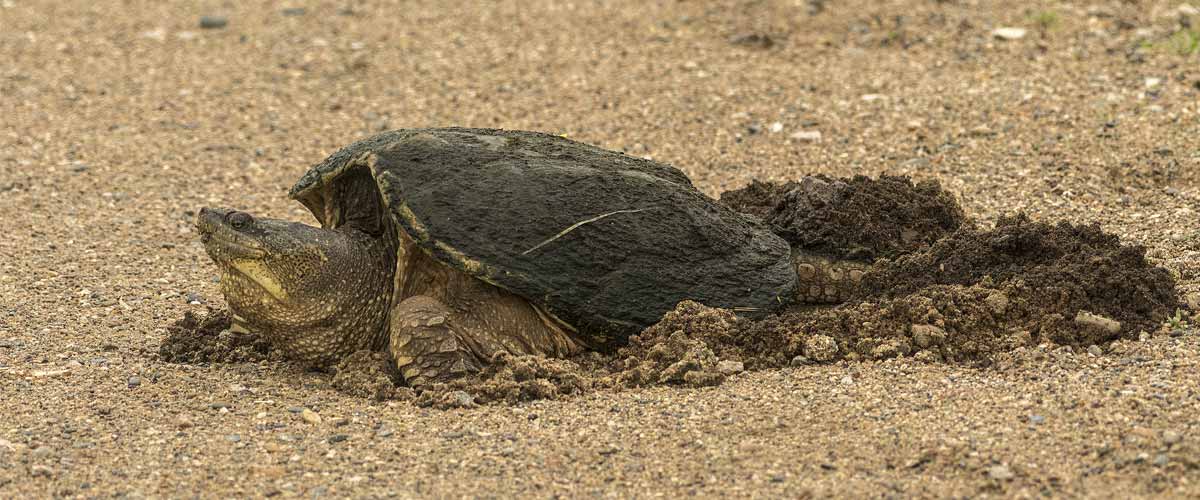
Snapping turtles have a bit of a reputation for being aggressive and scary. But there’s more to these unique turtles than their name might imply. From how old they can live to be to how many eggs they can lay at once (It’s a lot!) to how you can help protect them, read on to learn all about snapping turtles.
Largest Turtle in Minnesota
Snapping turtles are Minnesota’s largest turtle. They can have upper shells (carapace) that measure 20 inches from front to back. Including the tail, neck and head, they can grow to be over four feet long and weigh over 65 pounds!
Snapping turtles of that size are very rare, though. Most snapping turtles have shells ranging from eight to 14 inches long, and they typically weigh 10 to 35 pounds, which is still a good size for a local turtle. Male snapping turtles are bigger than females, and their tails are proportionally longer.
Snapping turtle shells, which are often covered with mud or algae, are brown, olive or black. Snapping turtles also have well developed limbs with strong claws. Hatchling snapping turtles are dark brown to black and have small white flecks on their underside.
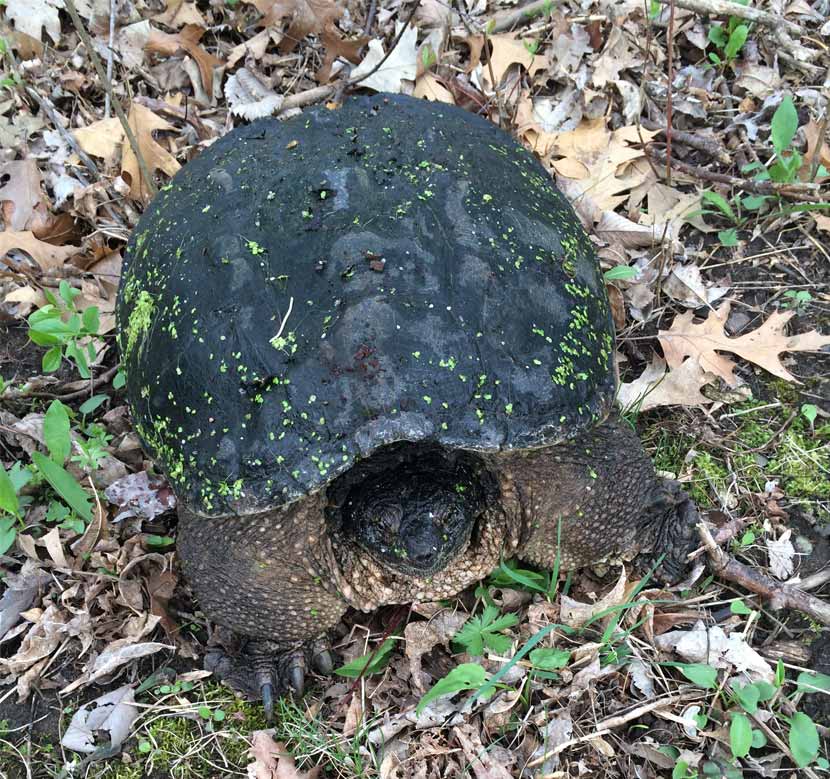
Where Can You See Snapping Turtles in Three Rivers?
You can find snapping turtles in all Three Rivers parks. In fact, you can see them throughout Minnesota. They can also be found across the entire United States east of the Rocky Mountains.
Where Do Snapping Turtles Live?
Snapping turtles make their homes in almost any type of permanent fresh water body including ponds, lakes, marshes, rivers, creeks and backwater sloughs. They normally spend their time in shallow water less than three feet deep but can swim to the deeper parts of lakes. Larger populations of snapping turtles are found in water bodies with mud bottoms and a lot of aquatic vegetation.
Where Do They Go in the Winter?
Snapping turtles often congregate in large numbers to hibernate below the ice. They often bury themselves in decaying vegetation and mud or wedge themselves under submerged logs while waiting out freezing weather. On occasion, snapping turtles have been seen slowly moving through the water under the ice during winter.
What Do Snapping Turtles Do In Warmer Months?
Snapping turtles become active once the ice has melted and warm weather arrives in late April or May. They are highly aquatic creatures. They either lie on the bottom in shallow water, extending their long neck just far enough to project their nostrils above the water for air, or they float beneath the water’s surface with their nostrils and eyes exposed.
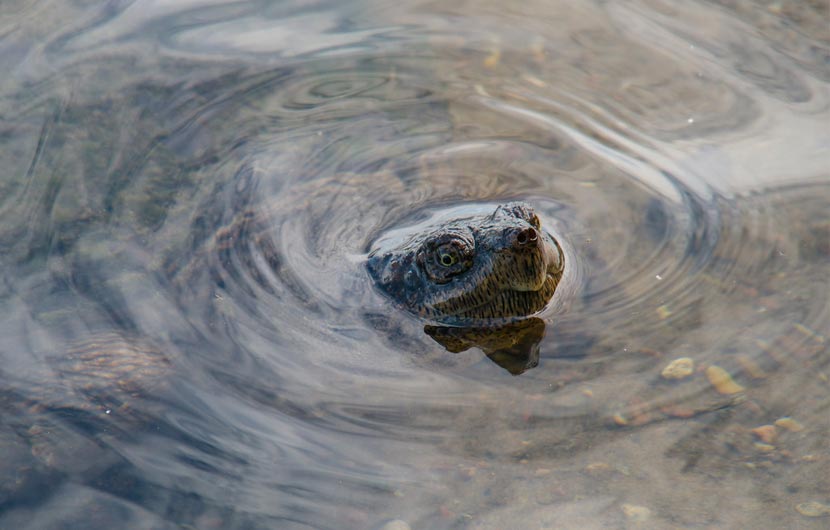
During the day, they frequently hide under submerged logs, rocks and debris. When night arrives, they become active and crawl along the bottom in search of food.
Snapping turtles can sometimes be seen basking with other turtle species. However, they bask less frequently than painted and spiny softshell turtles. This lack of basking often makes people think that they are not common in their lake or marsh.
What Do They Eat?
Snapping turtles are not picky eaters. They eat insects, crayfish, clams, snails, earthworms, leeches, freshwater sponges, fish, fish eggs, frogs, toads, tadpoles, amphibian eggs, salamanders, snakes, small turtles, birds, small mammals, carrion and various types of aquatic plants.
An unusual event was reported near Crow-Hassan Park Reserve in the 1990s where a snapping turtle killed an adult trumpeter swan. The submerged turtle grasped the head of a feeding swan in its mouth, and the bird drowned while attempting to escape. I am sure the turtle was not expecting such a large meal.
Snapping turtles must eat while submerged under water because they need the water pressure to swallow. They swallow small food items whole, and hold larger prey with their mouths and tear it apart with their claws.
Defense Mechanisms
Snapping turtles pulled from their watery home or cornered on land live up to their name by repeatedly lunging and striking with their mouth open. Typically, agitated turtles also emit a strong, pungent odor. This is how they defend themselves from predators. While in the water, they seem more intent on crawling or swimming away than standing their ground.
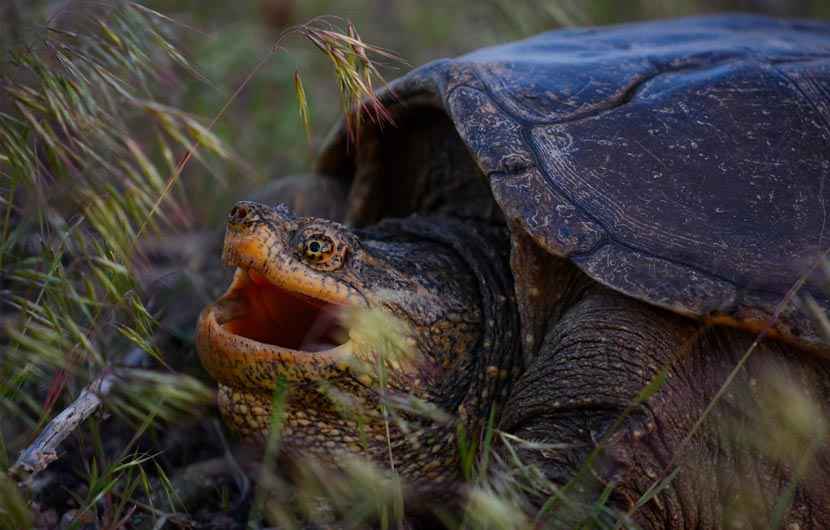
They are capable of delivering a painful and damaging bite, so it’s best to leave them alone. If you have to pick one up, it is best to securely grasp the turtle's hind legs near the shell and hold the turtle at a safe distance from your legs. Holding a large snapping turtle by its tail can cause serious damage to its spinal cord.
Adult snapping turtles have few predators other than humans and their cars, but natural predation of eggs and young turtles is remarkably high. Raccoons, skunks, fox and opossum dig up nests and eat freshly laid snapping turtle eggs. In some areas, all of the eggs are eaten by predators.
Nesting and Reproduction
Snapping turtles are sexually mature when their shells reach about eight inches long. In Minnesota, that takes about 8-10 years.
Here, they lay eggs in May and June. Females often make lengthy trips away from water to seek suitable open areas for nesting. Sandy river banks, open fields, road embankments, muskrat houses and lawns are common nesting sites.
Most nesting activity occurs in early morning or late evening, especially on warm rainy days. Females use their hind legs to dig a nest that is four to eight inches deep.
At one-minute intervals she typically lays a clutch of 20 to 30 eggs, but clutches can be as large as 83 eggs. Females lay larger clutches as they get larger. The white eggs have a tough, leathery shell and are shaped like ping pong balls.
Eggs take 55 to 125 days to hatch depending upon weather, but most eggs hatch in approximately 60 days. Hatchlings have a shell length of about one inch.
Female snapping turtles can live to be 50 years old. If a female starts laying eggs when she is 10 years old and averages 25 eggs a year, she would lay 1,000 eggs. If all those eggs hatched and grew up, we would be knee deep in snapping turtles!
In order to have a stable population of snapping turtles, only two of those eggs need to reach adulthood. Even with that low percentage, turtle populations are decreasing.
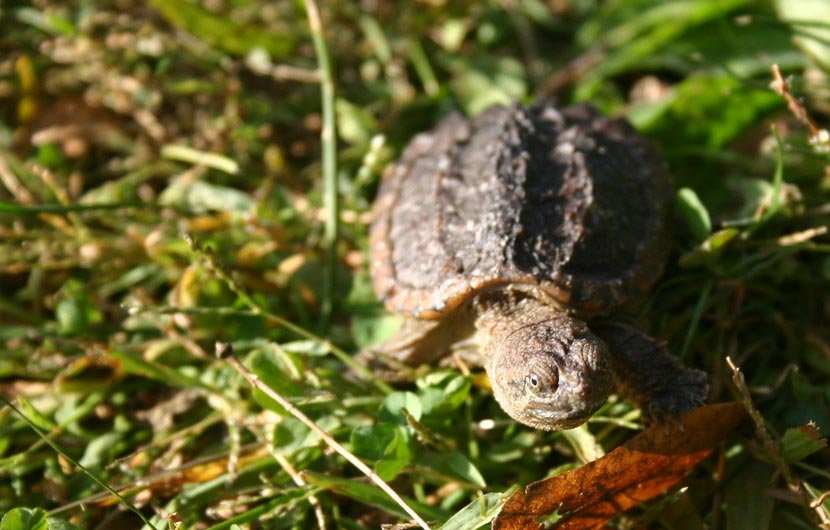
How You Can Help Snapping Turtles
There are a number of things we can all do to help support populations of snapping turtles and all turtle species:
- Slow down for turtles that are crossing roads. If you want to help a turtle across a road, make sure you can do it safely. Look for other cars, then move it quickly in the direction it was going, keeping it low to the ground as you do so. The safest way is to have a shovel in your car so you can push it across the road.
- Do not eat turtles. By the time turtles are large enough to harvest they are at least 20 to 25 years old. Human consumption of snapping turtles has contributed to their decline. A study by the Minnesota Pollution Control Agency in the 1980s also showed that snapping turtles from the Mississippi River contained high levels of toxic PCBs, which can make them unsafe to eat.
- Provide nesting habitat near lakes and wetlands. If there are places to nest near a lake, then to turtles do not have to cross roads.
- Do not disturb turtles that are nesting. Disturbed turtles may abandon their nest and then need to try again. This increases the chance the nest will be raided by predators and increases risk of harm to the female turtle.
Banner image by John Pennoyer.
Archive image credit: "snapping turtle portrait" by chiptape is licensed under CC BY-NC-SA 2.0.
About the Author
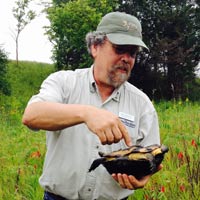
John Moriarty is the Senior Manager of Wildlife at Three Rivers Park District and has been with the Park District for 15 years. He has been involved in many of the wildlife restoration efforts and initiated the snake and butterfly efforts. John has led several projects to increase prairie habitat in the Park District. John likes exploring natural areas and looking for all types of plants and animals, but especially turtles.
Related Blog Posts
9 Things We Learned from the Medicine Lake Urban Turtle Project
By: John Moriarty
Where do spiny softshell turtles go after nesting on the beach at French Regional Park? How far do softshell, painted and snapping turtles travel in the water? Are they active in winter or affected by water quality? Find out what we learned during the Medicine Lake urban turtle project.
Prairie Burns: Protecting Precious Habitat with Fire
By: Erin Korsmo
Three Rivers conducts controlled burns at its prairies each spring. Learn what goes into burning a prairie and why fire is so important to preserving this special habitat.
Species Spotlight: The Magic of Fireflies
By: Miranda Jones
Fireflies evoke a sense of childlike wonder and delight. Learn what makes them glow, the threats to their population, and what you can do to protect them.
